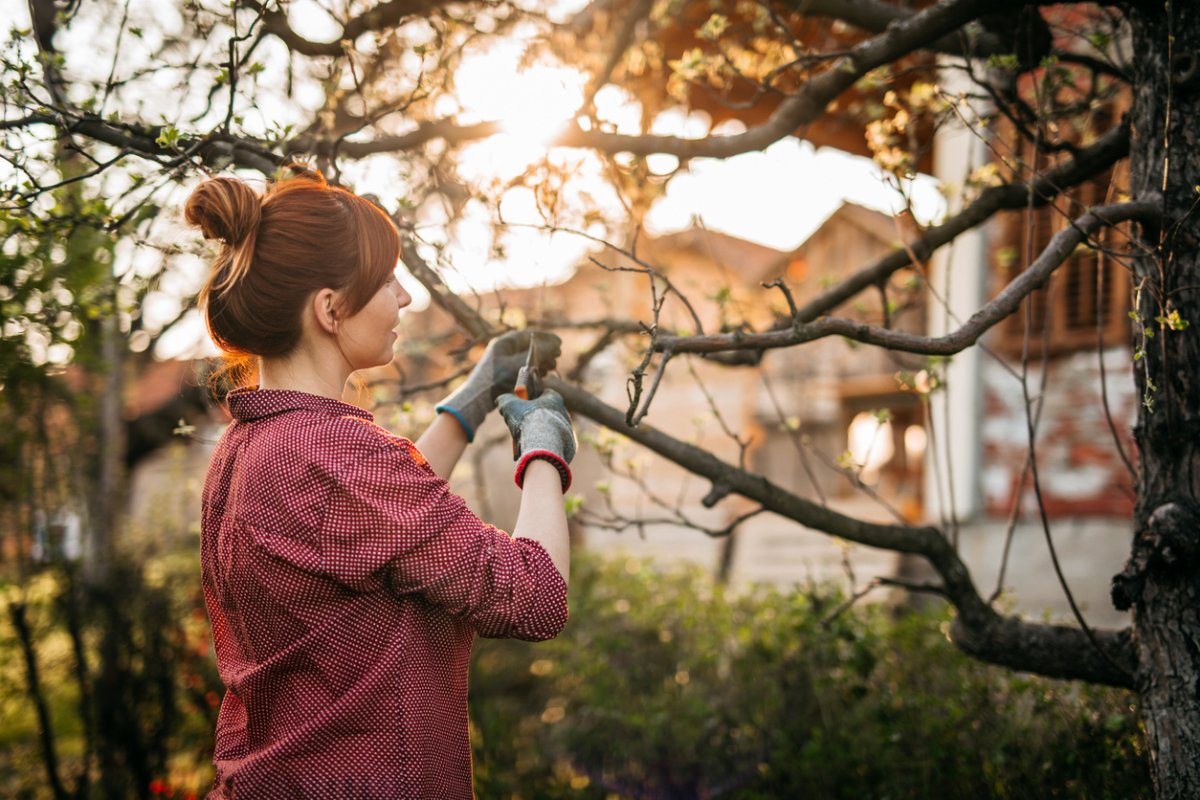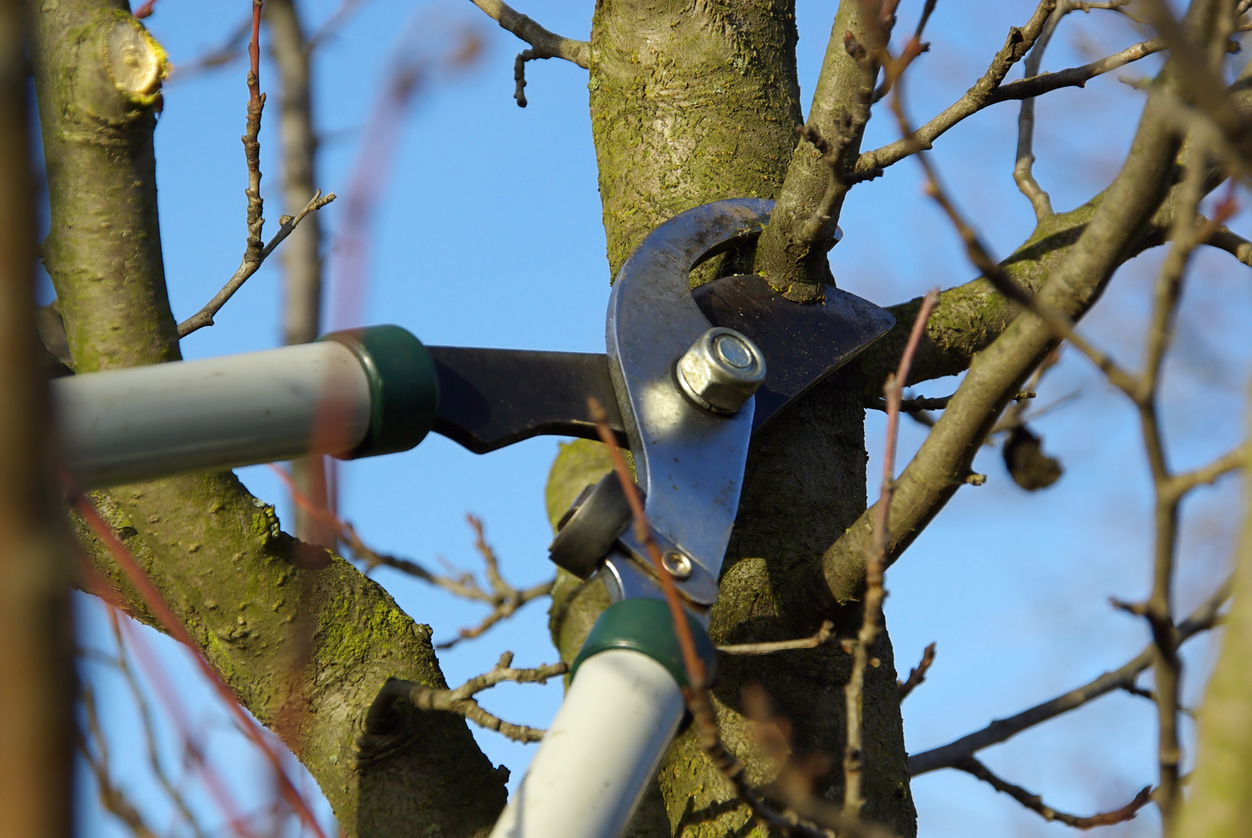

We may earn revenue from the products available on this page and participate in affiliate programs. Learn More ›
Q: I have several trees on my property that are looking a little overgrown and could use some shaping, but I don’t want to stress the plants during important periods of development. When is the best time to trim trees?
A: Pruning is an essential part of maintaining healthy trees. Regular pruning ensures that trees produce new growth in the spring and don’t put all their energy into many smaller branches. It’s also important to prune away dead, diseased branches that might become a hazard.
Keeping weak, spindly branches around is a recipe for disaster, especially if you have a towering tree on your property. Ice and snow buildup can easily end in an expensive accident. Removing damaged branches also limits the chances that trees will become infected with pathogens.
But trimming trees can be a tough job. You don’t want to waste all your energy only to prune at the wrong time of year. Focus those efforts on pruning at the ideal time. Here’s when you should trim trees to keep them healthy.
RELATED: The Best Pruning Shears, According to Testing
In most cases, late winter trimming is the answer.
Gardeners typically don’t think of winter as an active season. When the weather turns cold, it’s time to retire indoors and forget about the garden for a while. The winter season is the perfect time to turn off “gardening brain” and get a rest from tiring yard work.
It’s also a great time to prune trees and shrubs. Because trees go dormant in cold weather, winter is the ideal time to prune and shape them. Without leaves, there’s less in the way. This makes it easier to visualize a tree’s branch structure. It’s vital to get this task done before the weather warms, so you’re not cutting into new growth. Late-winter, early-spring trimming helps trees sink all their valuable energy into producing healthy new growth once the weather warms.

Exceptions to the rule: trees you shouldn’t trim in late winter.
Late-winter trimming isn’t a one-size-fits-all approach. Some trees and shrubs should be pruned after they’ve bloomed in the spring or summer. Trimming too early can damage or remove buds, drastically reducing the number of flowers that appear during bloom time. Examples are magnolia, crabapple, and redbud trees.
Bottom line: If a tree or shrub blooms in the spring, wait until after the flowers have begun to fade to trim. Specific timing will depend largely on the geographic location.
Dealing with dead or damaged tree limbs.
If you decide to remove dead and damaged tree branches on a very large tree yourself, be careful. It might be wise to leave it up to a professional if there’s a massive, old-growth tree involved. If it’s necessary to climb a tree to identify whether branches higher up are diseased or damaged, call a professional to do the job safely.
Most professional tree trimming businesses will get rid of the dead branches they remove for you. However, if removal is not included in the cost or you’re trimming trees yourself, look into removal services offered by the city.
RELATED: Trees and Property Lines: 9 Things All Neighbors Need to Know for Storm Season

When to trim young trees and shrubs.
Young trees and shrubs need a helping hand to grow in the right direction—literally. Early trimming helps trees develop a strong foundation and a desirable aesthetic. But trimming shouldn’t start too early.
When pruning a young tree, focus on removing broken or dead branches. Heavy pruning shouldn’t occur until at least 2 years down the road. Waiting ensures that the tree is well established and is no longer stressed as a result of transplanting.
